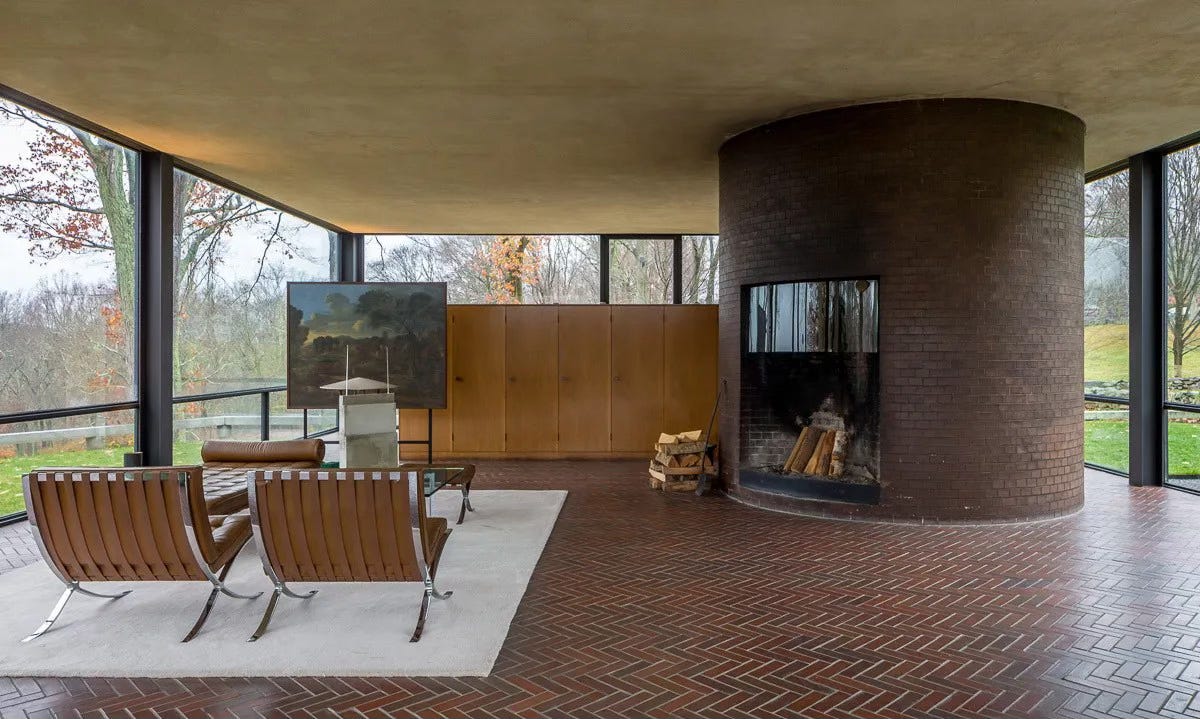
The austere glass box sited on a ridge in New Canaan, Connecticut, is the iconic Glass House designed by Philip Johnson (1906-2005). Born to a fortune, he helped finance New York’s Museum of Modern Art (MOMA), and was made curator of its Architecture Department in the early 1930s, where he would publicize the work of the Modernists — Ludwig Mies van der Rohe, Marcel Breuer, and Walter Gropius, who would soon flee Germany for America. By a strange irony, Johnson became an admirer of Adolf Hitler. He soon quit MOMA and started writing magazine articles praising the Nazi program. After attending a Nuremberg rally in 1932, he remarked to his biographer, Franz Schulze, “You simply could not fail to be caught up in the excitement of it, by the marching songs, by the crescendo and climax of the whole thing, as Hitler came on at last to harangue the crowd. . . all those blond boys in black leather” marching past the Führer.
That venture didn’t work out so well, and after the big war, Johnson made another career move back into architecture. The Glass House (1948-49) was an early stunt in that phase of his life, garnering Johnson adulation for his purity and simplicity. Mid-20th century Modernism worked tirelessly to wipe the slate clean of any architectural reference to history (and, of course, the Nazis had promoted an aerodynamic neo-classicism that was a type of Art Deco, now verboten). Journalists have noted that Johnson’s Glass House was likely a rip-off of Mies’s design for the also-iconic Farnsworth House in Illinois, designed around the same period but built a few years later.
What you see here is symptomatic of the cultural neurosis that has corroded Western Civ in the decades since: a house that does not make a distinction between the inside and the outside — that is, a house that explicitly states it is “not shelter.” This has been understood as “cutting edge” and “progressive” for three quarters of a century. The confusion was so brazen that at one point, Johnson had to hire an off-duty policeman to stand by and chase gawkers away. A sign on the driveway said: “This House Is Now Occupied Please Respect the Privacy of the Owner. It will be Open to the Public on specified days.”
Similarly, the house tries to demonstrate that views of “nature” are an adequate substitute for the neurological imperatives of humans to seek shelter. (Even campers have walls on their tents.) Or for buildings to express decorum artistically on their exteriors. Rather, what ends up on display in the Glass House is human behavior inside with no decorum whatsoever — only made possible by the aristocratic privilege of being surrounded by a large wooded estate.
Johnson actually died there in 2005 — he must have truly loved it — and left the building and its 52-acre property to the National Trust for Historic Preservation. The interior had all the charm of an airport lounge. Easy to vacuum the floors, though.


















How he forgot to hang any blinds or curtains, especially in the bathroom and bedroom reveals a lack of decorative creativity or need to ever sleep after the sun has risen.
At first sight I thought it was a shelter from the rain. I had to keep reading to get it through my head what it was, and I still think that you are joking.